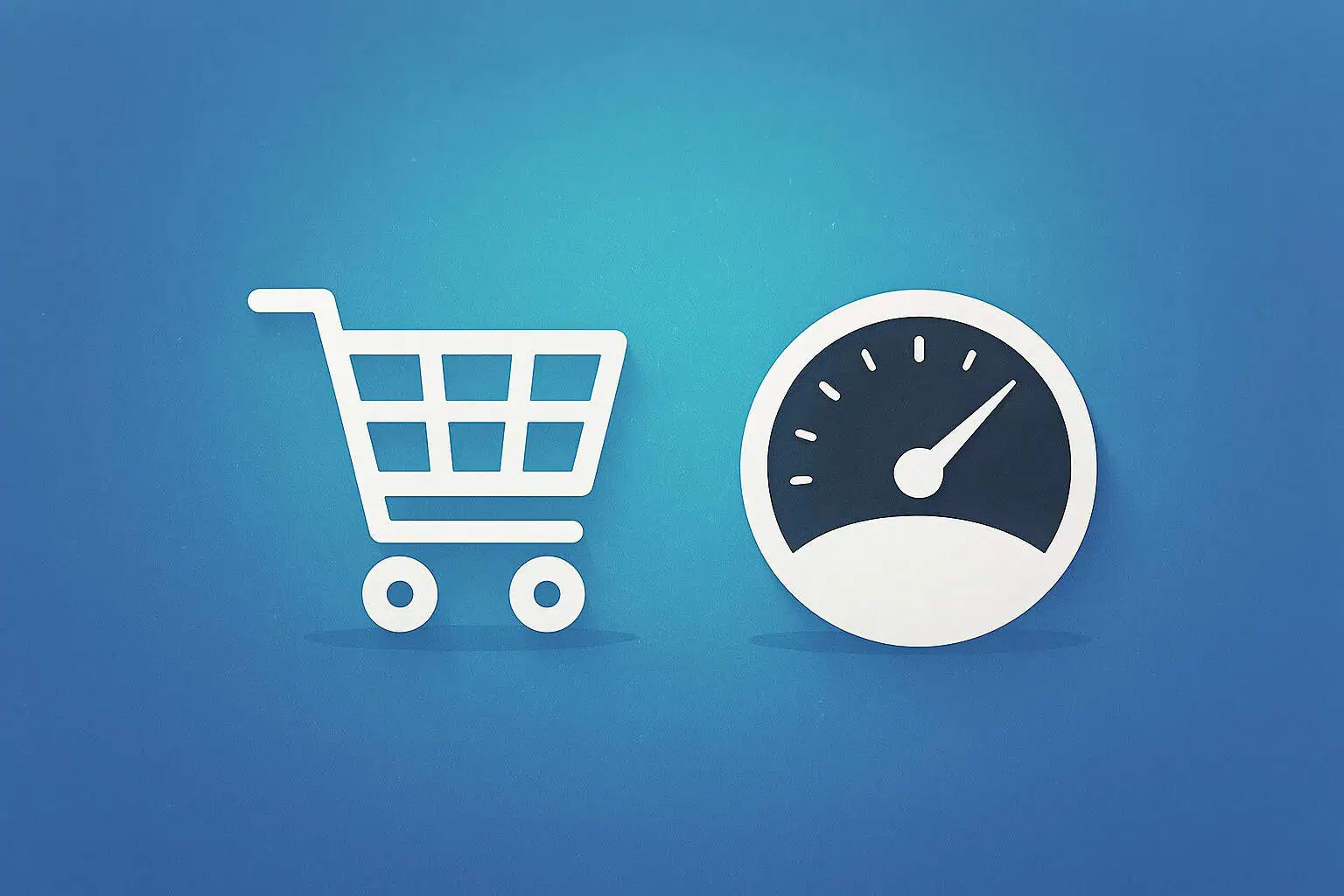Now that FluentCart is live and officially launched, we tested both eCommerce plugins on the same WordPress installation to find out just how much faster FluentCart really is. Because let’s be honest: the question is not whether it is faster. Virtually everything is faster than WooCommerce 😉
The versions used for this test are:
- WooCommerce: v10.0.1
- FluentCart: v1.2.2
FluentCart promotes itself as a modern, lightweight alternative to WooCommerce, using the REST API and a single-page app (SPA) admin interface to reduce server load and improve speed. Let’s take a look at the data.
Test Conditions
We used a Hetzner CX22 server with 2 vCPUs and 4 GB of RAM; nothing fancy, but enough for our tests. All tests were performed under identical conditions:
- Fresh WordPress installation.
- Same theme (Twenty Twenty-Five).
- All onboarding wizards run with default settings.
- Demo content imported.
- FluentCart can natively import 10 products under the Menswear category.
- WooCommerce, using its
sample-products.csvfile, imports 18 products across multiple categories, so we removed 8 to keep things equal.
- Stripe set as the payment method since it’s the only one available on FluentCart (besides PayPal). For WooCommerce, we installed the official WooCommerce Stripe Gateway (WCSG) to make an objective comparison.
- No other plugins installed, except Code Profiler Pro to measure performance.
- Each plugin uses its own Cart, Checkout, My Account and Shop pages.
Performance Metrics
We measured each plugin’s performance using the following metrics:
- PHP Execution time (ms). Frontend pages were measured as a logged out user.
- Homepage
- Shop page of each plugin
- Product page of each plugin
- Product list page in the WordPress admin of each plugin
- WordPress admin dashboard
- Total CSS & JS size and file count (KB). Frontend pages were measured as a logged out user.
- Homepage
- Shop page of each plugin
- Product page of each plugin
- Cart page of each plugin (with 1 product in the cart)
- Checkout page of each plugin
- Product list page in the WordPress admin of each plugin
- PageSpeed Insights / Lighthouse results.
- Shop page
- Product page
Execution times were measured with the Code Profiler Pro plugin. Each test was run three times, and we averaged the results to make sure we got accurate times.
Results
PHP Execution time (ms)
| Context | WooCommerce | FluentCart | Difference |
|---|---|---|---|
| Dashboard | 0.587 | 0.135 | ~4× faster |
| Products (admin area) | 1.126 | 0.203 | ~5-6× faster |
| Homepage | 0.637 | 0.140 | ~4-5× faster |
| Shop | 0.887 | 0.376 | ~2× faster |
| Product | 0.883 | 0.287 | ~3× faster |
In addition, for WooCommerce, the following time should be added from WooCommerce Stripe Gateway.
| Context | WooCommerce Stripe Gateway |
|---|---|
| Dashboard | 0.073 |
| Products (admin area) | 0.084 |
| Homepage | 0.071 |
| Shop | 0.071 |
| Product | 0.089 |
Result: FluentCart shows significantly lower PHP execution time across every page type, confirming a lighter backend footprint.
CSS and JS File Requests
Homepage (or any other non-commerce page)
| Metric | WooCommerce + WCSG | FluentCart |
|---|---|---|
| CSS files | 10 (238 KB) + 1 (3.5 KB) | 2 (24.3 KB) |
| JS files | 22 (555 KB) + 1 (282 KB) | 2 (36.1 KB) |
Result: FluentCart loads drastically fewer resources on pages unrelated to the store.
Shop Page
| Metric | WooCommerce + WCSG | FluentCart |
|---|---|---|
| CSS files | 16 (250 KB) + 1 (3.5 KB) | 9 (111 KB) |
| JS files | 24 (564 KB) + 1 (282 KB) | 9 (177 KB)* |
Result: FluentCart loads 2–3× fewer CSS and JS files on the default shop page. Counting WCSG makes the gap even wider (thanks to that massive JS file). The same results happen on the rest of archives.
* Note: Two JS requests in FluentCart returned 404 errors.
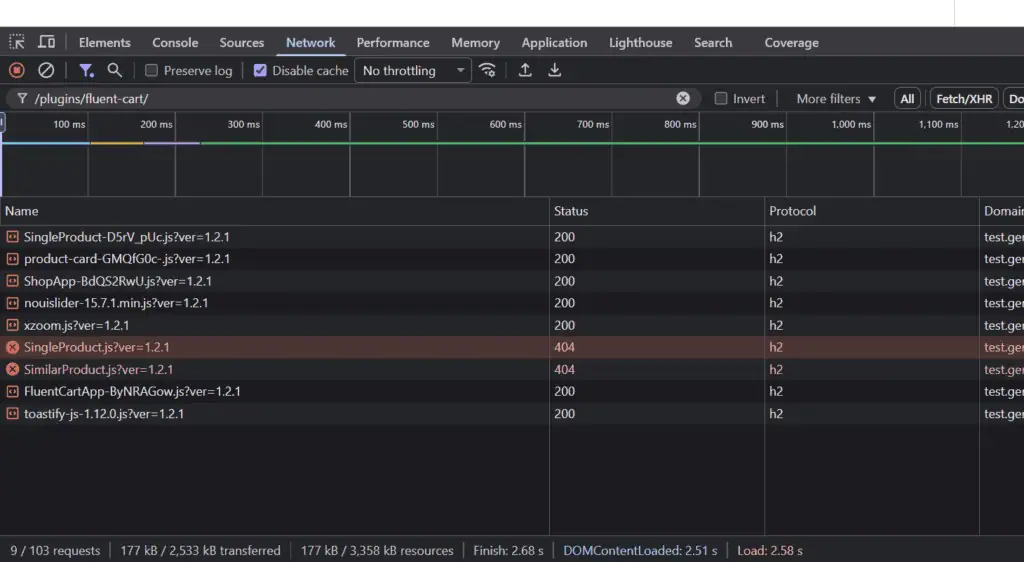
Product Page
| Metric | WooCommerce + WCSG | FluentCart |
|---|---|---|
| CSS files | 21 (272 KB) + 4 (4.7 KB) | 9 (70.2 KB) |
| JS files | 40 (672 KB) + 3 (541 KB) | 5 (124 KB) |
Result: FluentCart reduces both request count and file size by around 75–80% (not counting WCSG).
Cart Page (with 1 product)
| Metric | WooCommerce + WCSG | FluentCart |
|---|---|---|
| CSS files | 12 (299 KB) + 4 (4.7 KB) | 2 (24.3 KB) |
| JS files | 23 (596 KB) + 3 (541 KB) | 2 (36.1 KB) |
Result: FluentCart keeps it minimal, and apparently they load the exact same assets as on other non-eCommerce pages.
Checkout Page
| Metric | WooCommerce + WCSG | FluentCart |
|---|---|---|
| CSS files | 9 (347 KB) + 4 (4.7 KB) | 4 (113 KB) |
| JS files | 23 (617 KB) + 3 (541 KB) | 12 (350 KB) |
Result: FluentCart’s checkout is again lighter, while still includes all JavaScript logic for validations and payment forms.
Products Page (Admin)
| Metric | WooCommerce + WCSG | FluentCart |
|---|---|---|
| CSS files | 12 (626 KB) + 1 (3.5 KB) | 3 (1,003 KB) |
| JS files | 38 (1,673 KB) + 0 | 50 (3,880 KB) |
Result: This is the only place where WooCommerce wins on paper, because FluentCart’s admin section is built as a single-page app using the REST API. That means it loads heavier JavaScript upfront, but after that, switching between admin sections happens much faster, without full page reloads. In other words, FluentCart is heavier, but faster in use.
In terms of CSS, WooCommerce also wins. FluentCart’s control panel has a heavily customized interface, which is something we dislike and we would’ve preferred a more integrated design. That would be good for the user, who wouldn’t feel like they’ve were taken to a different platform, and for the website, because it wouldn’t have to load and parse all that extra CSS. Plugins like Autoptimize, WPvivid or Cache Enabler do that much better, to mention some examples.
Summary Table
Let’s take a look at the big picture combining the CSS and JS, to see the overall reduction (or increase) in total static resources.
| Page / Area | WooCommerce | FluentCart | Reduction |
|---|---|---|---|
| Homepage | 793 KB (32 requests) | 60.4 KB (4) | -92% |
| Shop | 814 KB (40) | 288 KB (18) | -65% |
| Product | 944 KB (61) | 194 KB (14) | -79% |
| Cart | 895 KB (35) | 60.3 KB (4) | -93% |
| Checkout | 964 KB (32) | 463 KB (16) | -52% |
| Admin (Products) | 2.3 MB (50) | 4.9 MB (53) | +113% |
If we include the resources added by WooCommerce Stripe Gateway, things get even better (for FluentCart, of course):
| Page / Area | WooCommerce + WCSG | FluentCart | Reduction |
|---|---|---|---|
| Homepage | 1.1 MB (34) | 60.4 KB (4) | -95% |
| Shop | 1.1 MB (42) | 288 KB (18) | -74% |
| Product | 1.5 MB (68) | 194 KB (14) | -87% |
| Cart | 1.4 MB (42) | 60.3 KB (4) | -96% |
| Checkout | 1.5 MB (39) | 463 KB (16) | -69% |
| Admin (Products) | 2.3 MB (51) | 4.9 MB (53) | +113% |
PageSpeed Insights
We also measured two pages (the shop/archive page and a product page) using PageSpeed Insights to see what a real user would theoretically experience. Remember: WooCommerce’s results include the WooCommerce Stripe Gateway plugin, which adds extra resources and extra work for the browser.
Shop Page – WooCommerce
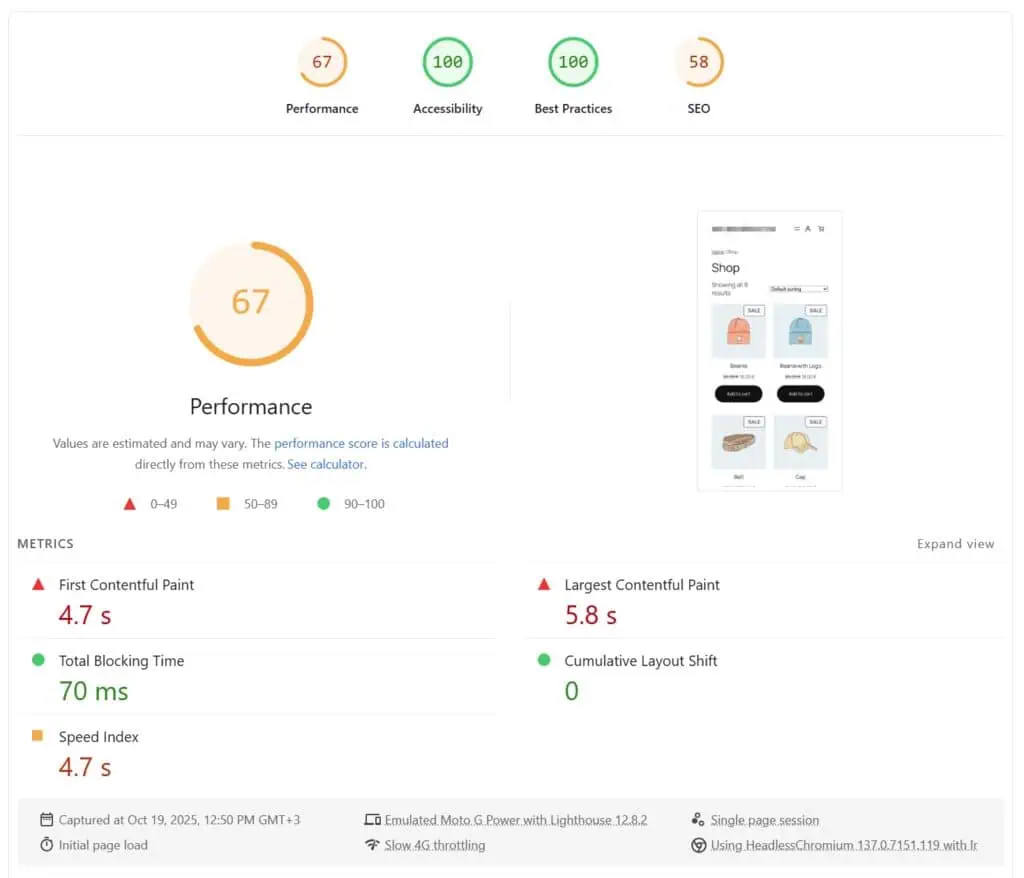
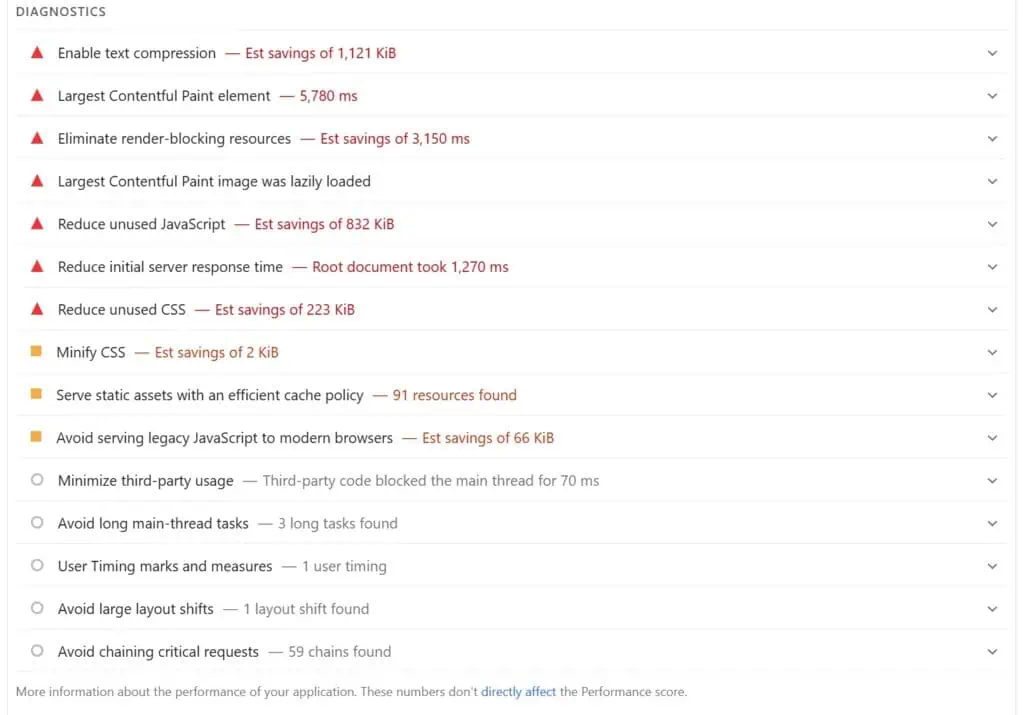
Shop Page – FluentCart
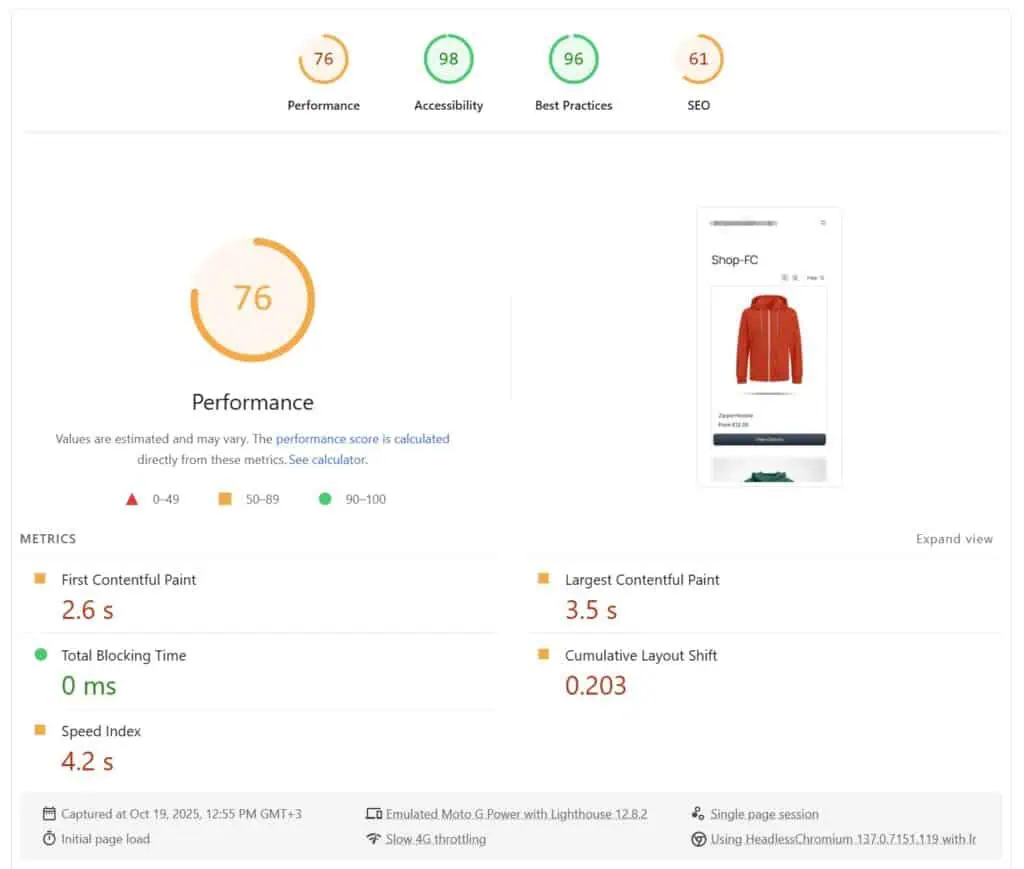
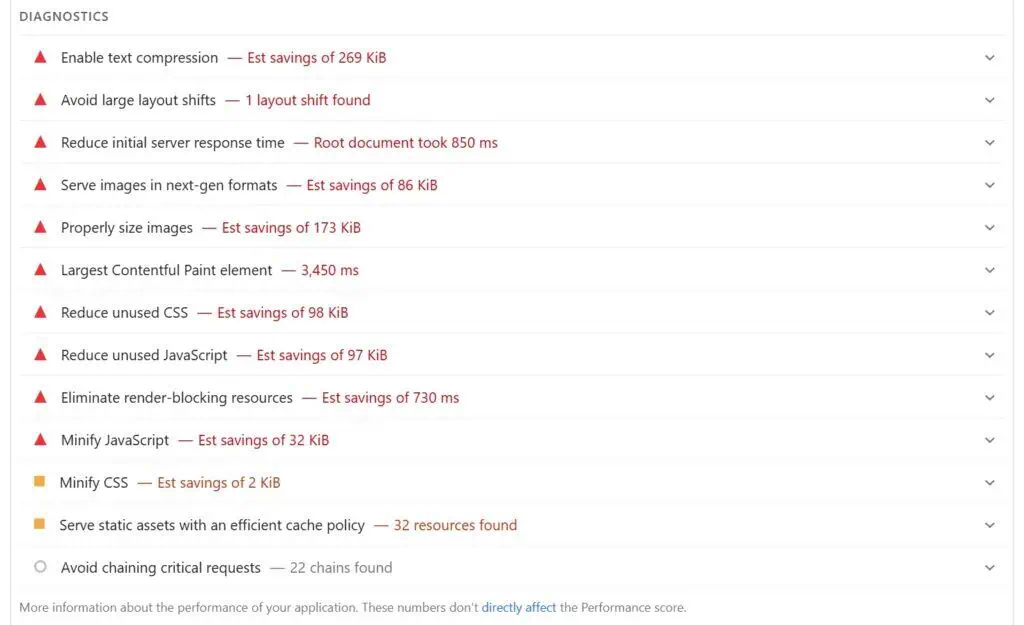
Product Page – WooCommerce
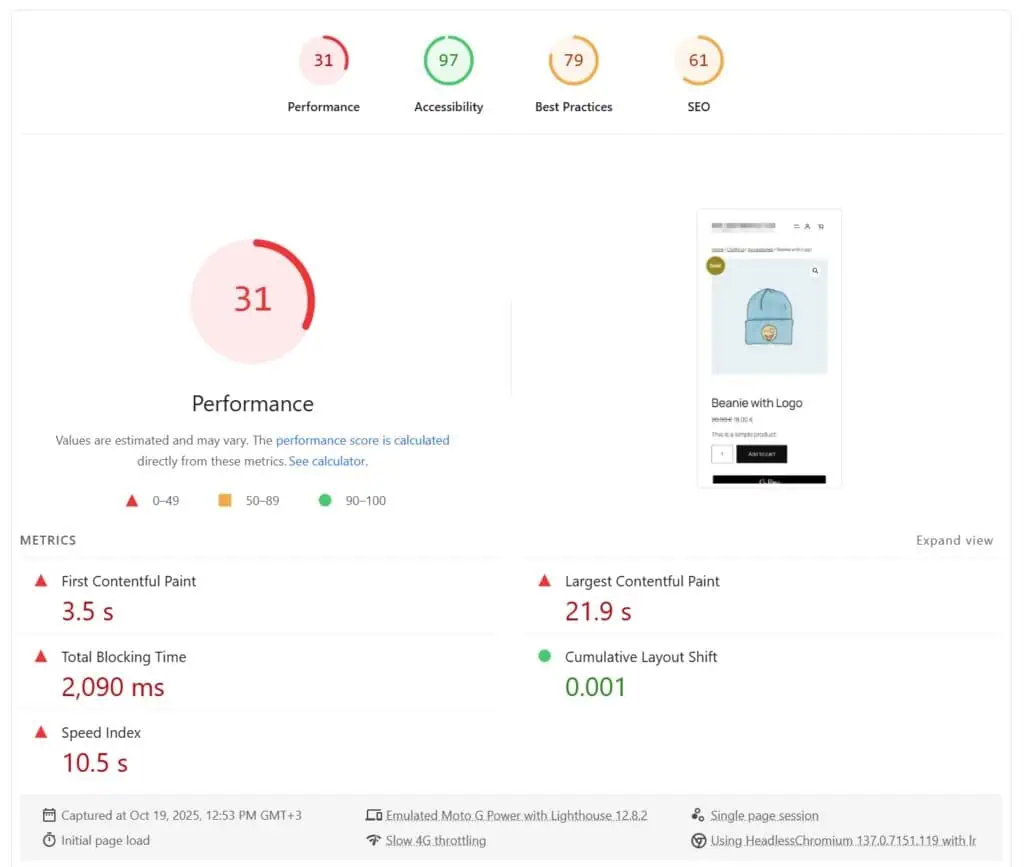
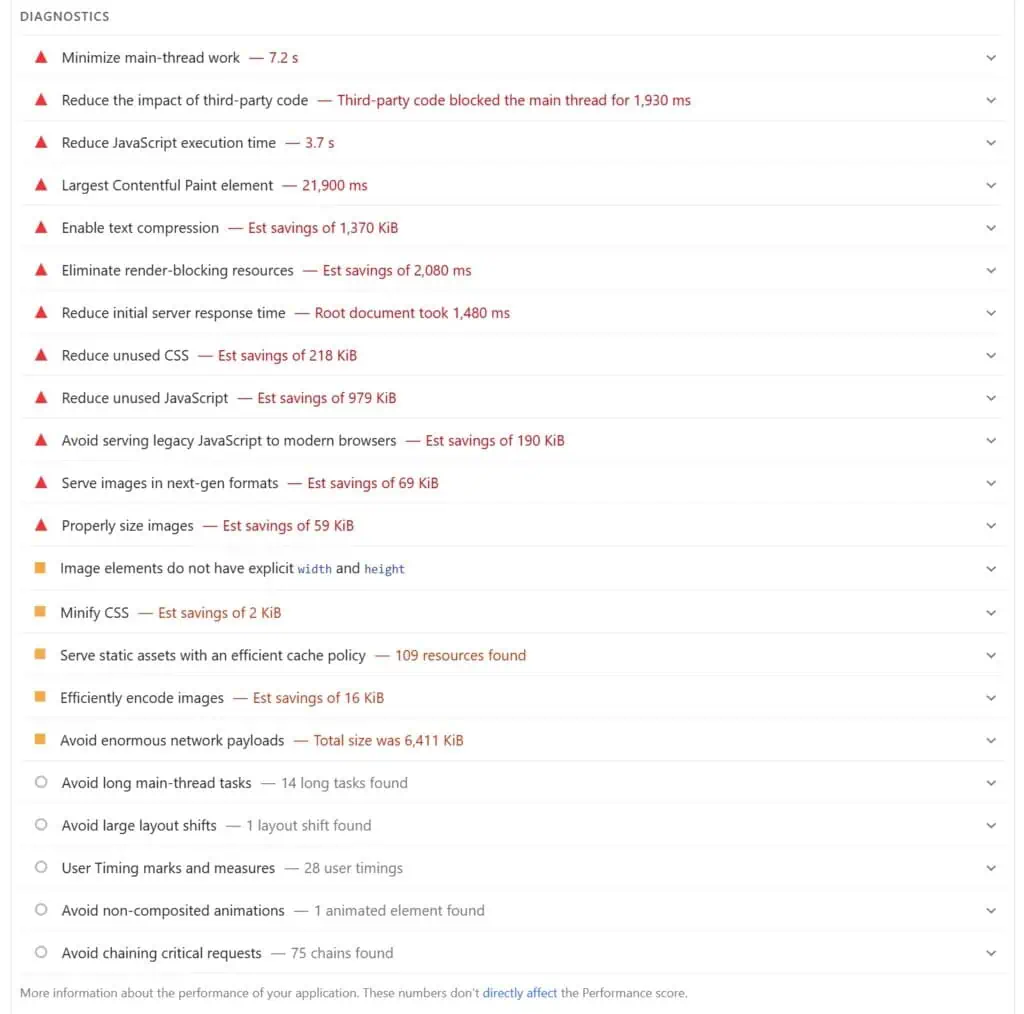
Product Page – FluentCart
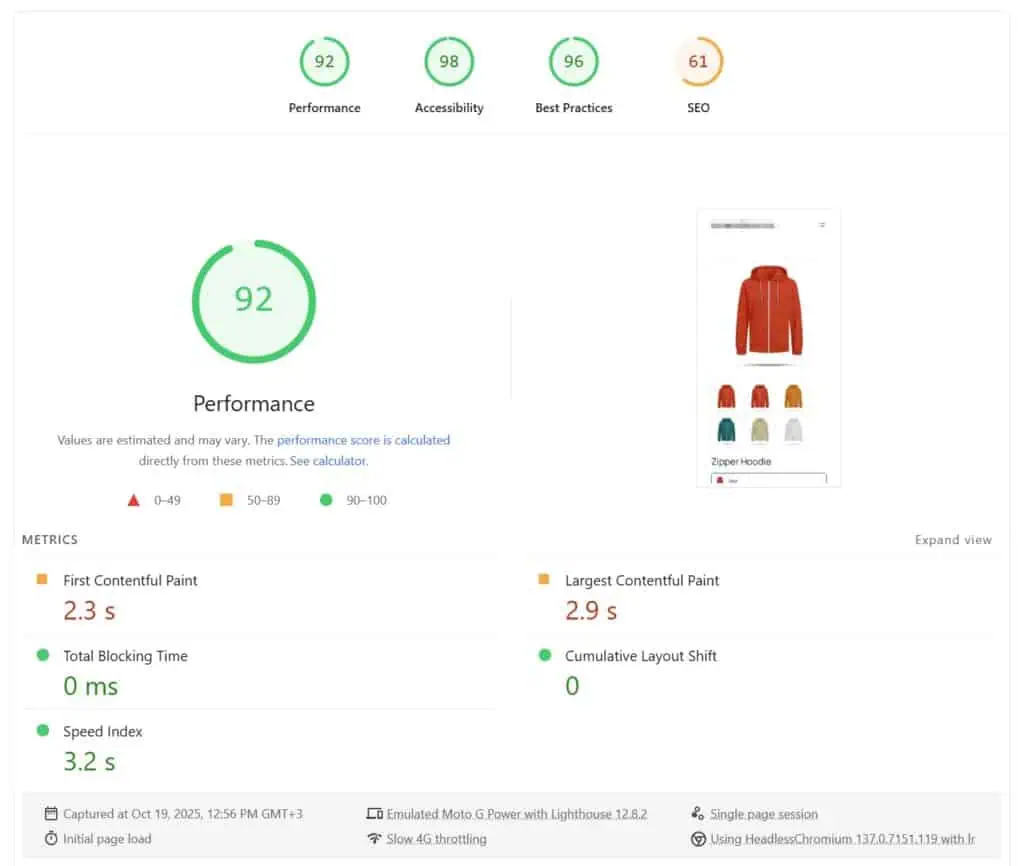
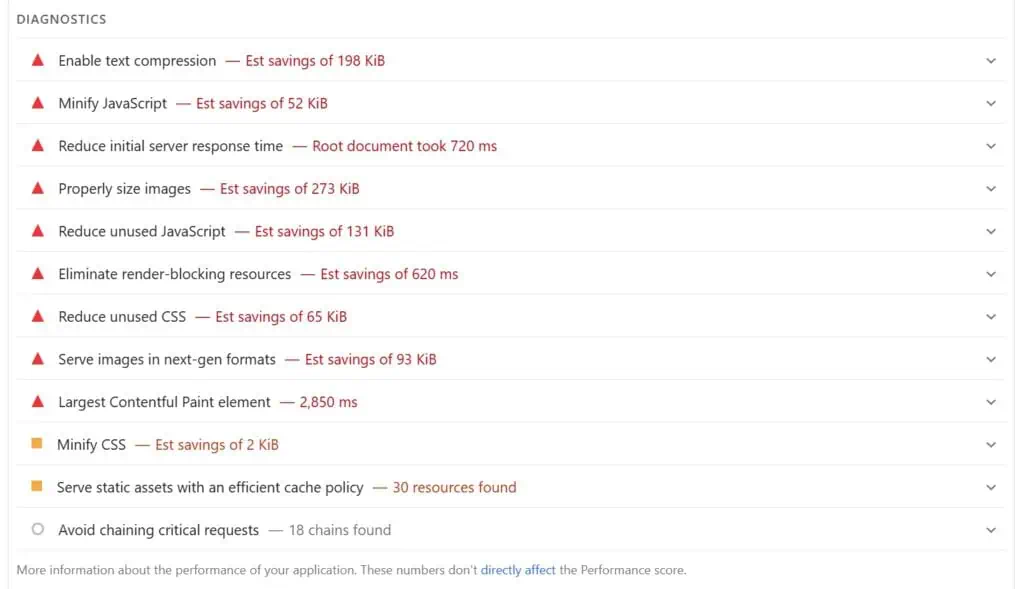
Results
Honestly, WooCommerce’s results are disappointing considering how popular it is (powering over 8% of all websites in the whole world). The only Core Web Vital it keeps under control is the CLS, which FluentCart still needs to improve.
However, In every other aspect, FluentCart performs significantly better, especially on product pages. Using FluentCart results in:
- Better Largest Contentful Paint (LCP)
- Better First Contentful Paint (FCP)
- Better Total Blocking Time (TBT)
- Better Speed Index (SI)
- Better initial server response time
- Less unused JavaScript
- Less unused CSS
- Less legacy JavaScript served
- Images served with explicit
widthandheightattributes - Less chaining critical requests
- Less long main-thread tasks
Key Takeaways
Yes, FluentCart is faster, especially on the back-end where there is no cache that can hide the performance issues. Why is that?
- Relies heavily on the REST API and a JavaScript app instead of PHP-rendered admin pages.
- Thanks to this more modern architecture, it also minimizes server processing.
- Loads fewer files on the frontend (especially non-store pages).
However, there are some small trade-offs in order to get a faster eCommerce experience:
- The admin JavaScript size is larger during the initial load. Therefore, the first load of any FluentCart page in the backend may take longer than it does with WooCommerce.
- Less mature ecosystem and way less extensions than WooCommerce.
- Very customized UI.
Conclusion
FluentCart clearly delivers on its promise of being a lighter and faster alternative to WooCommerce. It dramatically reduces file requests, CSS/JS size, and server execution time. And while its admin panel loads a large JavaScript payload, that’s the cost of a modern, app-like experience that feels smoother and more responsive once loaded.
However, FluentCart still has a long road ahead if it wants to become even slight competition, considering WooCommerce’s huge dominance. There are thousands of plugins and themes made for WooCommerce, and any serious business should pay careful attention to what they might miss by jumping onto a new-in-the-business wagon: less compatibility and less flexibility. But we hope this will change soon!
We should also consider that FluentCart is light because it’s a new plugin. Soon they’ll add more and more features, and the advantage they currently have in terms of performance will be reduced, although we suspect they’ll still come out ahead thanks to their better and more modern development approach.
As for the Core Web Vitals, which are the metrics that you need to follow (and not a 0-100 vanity score), both plugins take a toll on them, but you’ll be closer to passing them with FluentCart than with WooCommerce.
As a final note, if you end up using WooCommerce, find a better plugin for Stripe than the official one 😉

